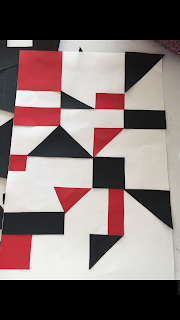The meaning of art.
Art is a tribute to man’s own humanity. Such, no doubt, is the real basis of the popularity of portrait painting .The rise of the portrait corresponds fairly exactly with the rise of the novel. Portraits of Dante and others have been identified in the fresco ascribed to Giotto in the chapel of the Bargello, in Florence. A good portrait in the humanistic sense may therefore be defined as a faithful portrayal of the character of an individual. The interest is psychological - that is to say, we make no moral judgments about the character of the individual portrayed. Many portraits, however, are admittedly great works of art, so that we have to ask ourselves finally what is it that distinguishes a portrait,it is simply the aesthetic values, meaning the formal relations of space and colour that constitute the structural organization of all works of art. In that sense a portrait might be accepted at its face value as a still-life. In the best portraits the painter or the sculptor passes beyond the individual character of his sitter to certain universal implications. Therefore, that besides purely formal values, such as we find in a pot, there may be psychological values - the values arising out of our common human sympathies and interests, and even those arising out of our subconscious life; and beyond these, philosophical values which arise out of the range and depth of the artist's genius. These are perhaps rather vague words-at least, this word genius. If we have ideas to express, the proper medium is language. The artist is impervious to ideas at his peril, but his business is not with the presentation of such ideas, but with the communication of his emotional reaction to them.
Art is a tribute to man’s own humanity. Such, no doubt, is the real basis of the popularity of portrait painting .The rise of the portrait corresponds fairly exactly with the rise of the novel. Portraits of Dante and others have been identified in the fresco ascribed to Giotto in the chapel of the Bargello, in Florence. A good portrait in the humanistic sense may therefore be defined as a faithful portrayal of the character of an individual. The interest is psychological - that is to say, we make no moral judgments about the character of the individual portrayed. Many portraits, however, are admittedly great works of art, so that we have to ask ourselves finally what is it that distinguishes a portrait,it is simply the aesthetic values, meaning the formal relations of space and colour that constitute the structural organization of all works of art. In that sense a portrait might be accepted at its face value as a still-life. In the best portraits the painter or the sculptor passes beyond the individual character of his sitter to certain universal implications. Therefore, that besides purely formal values, such as we find in a pot, there may be psychological values - the values arising out of our common human sympathies and interests, and even those arising out of our subconscious life; and beyond these, philosophical values which arise out of the range and depth of the artist's genius. These are perhaps rather vague words-at least, this word genius. If we have ideas to express, the proper medium is language. The artist is impervious to ideas at his peril, but his business is not with the presentation of such ideas, but with the communication of his emotional reaction to them.

Comments
Post a Comment